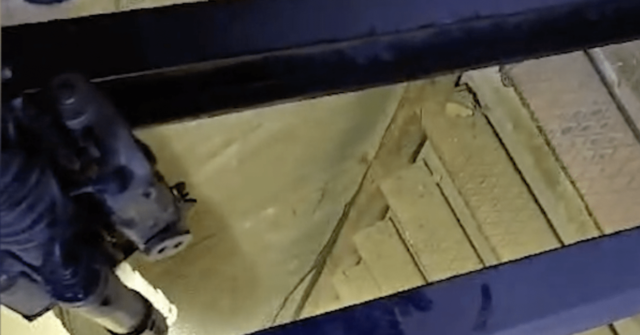On Sunday, the Israel Defense Forces (IDF) announced the discovery of a Hezbollah militant hiding in an underground tunnel, surrounded by an arsenal of weapons. The revelation came amid reports of Hezbollah’s retreat from the battlefield, as the IDF advances through southern Lebanon with comparatively minimal resistance. Israeli forces have significantly increased their operations, utilizing both artillery and airstrikes to target known Hezbollah positions and stockpiles. However, the extensive tunnel network utilized by the militant group poses a continued threat, as it could allow for ambushes against advancing troops.
The IDF’s ground operations have focused on targeted raids informed by precise intelligence. Recently, troops uncovered a tunnel shaft within a building, leading to a hidden area equipped for long-term occupancy by Hezbollah fighters. The operations revealed a compound approximately 7 meters deep, measuring 50 meters in length, where a Hezbollah terrorist was found with an array of weapons and equipment. Upon surrendering, the captured individual was interrogated on-site before being escorted to a detention facility in Israel for further questioning, signifying an effective tactical maneuver by the IDF.
In a strategic move, the IDF shared footage of the apprehension, depicting soldiers coaxing the militant out of the tunnel. The soldiers instructed the individual to remove his outer clothing, a precaution aimed at preventing concealed explosives. The IDF’s release of this information and media seems intended not only to document operational successes but also to challenge narratives in the Arab world that deny Israel’s achievements on the battlefield. Such transparency serves to bolster public perception of the IDF’s effectiveness and capabilities against Hezbollah.
Hezbollah’s operational stratagems often include the construction of extensive tunnel networks that can serve as hiding places or launch points for attacks. The IDF’s recent discoveries indicate a proactive approach to confront these security threats. By targeting tunnel systems and other military infrastructures, the IDF aims to diminish Hezbollah’s combat efficacy while asserting superiority in the ongoing conflict. Understanding these elements is crucial for evaluating the broader implications of current military operations between Israel and Hezbollah.
The legality surrounding the publication of images involving captured combatants falls under complex international humanitarian law, particularly the Geneva Conventions. While the convention does not outright ban the release of such images, it does emphasize the importance of treating prisoners with dignity and forbids actions that expose them to public derision. The IDF’s decision to publicize the capture serves a dual purpose: informing their own populace of military progress while also asserting Israel’s stance on the ongoing tensions with Hezbollah.
In conclusion, the recent developments in the Israel-Hezbollah conflict underscore the ongoing complexity of warfare in the region. The IDF’s targeted operations have successfully discovered and neutralized threats posed by Hezbollah’s tunnel infrastructure. By releasing information and footage regarding their operations, the IDF seeks to counter misinformation and reassess the power dynamics in the region. As these military engagements continue to unfold, the situation remains a critical point of focus for both regional stability and international discourse surrounding acts of warfare and adherence to humanitarian norms.

